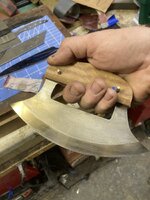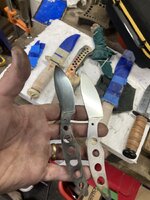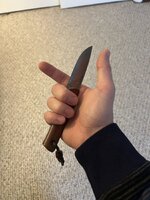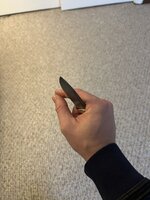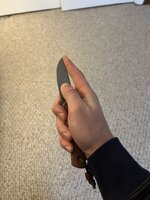For me, the mark of a good knife is being able to easily identify where the edge of the blade is without having to look. That is why I contour my handles, use ergonomic handle design, and include a small guard. The CBK design goes against most of my knife philosophy yet I still know where the edge is at all times.
I do a lot of choking up and pinch grip cuts with my knives, and I have found that a 2.75-3.25” blade with a slight drop point works best for me.
I do a lot of fishing and need to be able to tie on a new lure/fly with my knife still in hand so I don't have to re-sheath the blade between cutting off the old knot and trimming the tag end of the new knot.
I have a ”test” that I use to make sure the knife is usable for me. I have to be able to securely hold the knife with my middle, ring and pinky fingers, leaving my index and thumb available to articulate and tie knots. Coincidentally, this is the same grip I use when skinning game and working blindly in the chest cavity.
View attachment 815596
View attachment 815597
View attachment 815598
I find it very interesting that the CBK and a more “traditional” knife design are so wildly different in looks, but are more or less the same “in use” ie: choking up, pinch grip, finger along spine.
Dixie and Slalomnorth have it right, we really aren't doing anything new here, just revisiting old ideas, and the search for the “perfect” knife is what makes all this so much fun.


